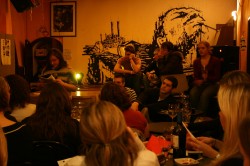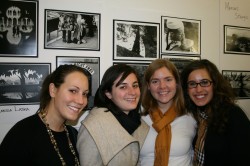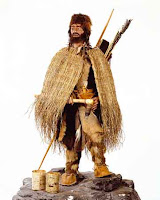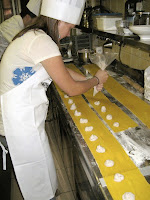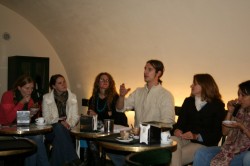 While looking across Perugia’s valley perforated with olive-trees and striated with vineyards, soap suds might not be the first thing that comes to mind.
While looking across Perugia’s valley perforated with olive-trees and striated with vineyards, soap suds might not be the first thing that comes to mind.
Students enrolled in Comparative Global Business Cultures class this semester get the opportunity to see Italy from a much different view. While working on a project designed to analyze local companies and their organizational culture and strategies, students visited SACI—a local, family owned and operated company that produces household liquid detergents, nestled in the valley below and just outside Perugia.
At SACI, students first received an informative overview of the company’s 100 year-old history from Lorenzo Campanile, one of the managers and the youngest member of the father-son team which is now in its fourth generation. After an extensive tour of the production facilities, students spoke with owner and company patriarch, Antonio Campanile.
generation. After an extensive tour of the production facilities, students spoke with owner and company patriarch, Antonio Campanile.
Students took notes as Mr. Campanile spoke about the evolution of the company, explaining how his grandfather started the business making soaps made from natural materials like lard, to the dramatic changes the company underwent after WWII as consumer demands lead the company where it is today; a European leader in the manufacturing of private-label liquid detergents for the large-scale retail market.
 The goal is for students to build profiles based on interviews with each company’s managers that will ultimately determine corporate culture and leadership style. The outcome will be a formal report, presented to the company’s managers at the end of the semester, outlining recommendations and possible courses of actions for the company.
The goal is for students to build profiles based on interviews with each company’s managers that will ultimately determine corporate culture and leadership style. The outcome will be a formal report, presented to the company’s managers at the end of the semester, outlining recommendations and possible courses of actions for the company.
After today’s interesting experience students might just think again next time they gaze across the countryside, asUmbria not only has world-class monuments, food and wine but also—who would have thought—soap!
 Yesterday night was Umbra’s semi-annual talent show, one of the closing events of the semester. The University of Perugia’s student union, called 100Dieci, was packed with Umbra students (and their Italian and other
Yesterday night was Umbra’s semi-annual talent show, one of the closing events of the semester. The University of Perugia’s student union, called 100Dieci, was packed with Umbra students (and their Italian and other
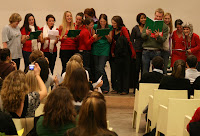 some Christmas songs, some not – and the show finished with an encore byDePace and Napier, and the traditional southern Italian Christmas song, “Mauro The Red-Nosed Reindeer,” sung in unison to Umbra’s own Mauro Renna.
some Christmas songs, some not – and the show finished with an encore byDePace and Napier, and the traditional southern Italian Christmas song, “Mauro The Red-Nosed Reindeer,” sung in unison to Umbra’s own Mauro Renna.

